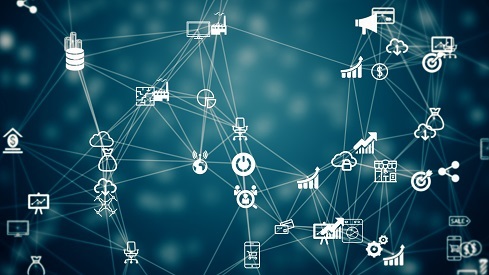Cybersecurity ‘Nutrition’ Labels Still a Work in Progress

The effort to create informative labels to give buyers insight into the cybersecurity of connected devices continues to advance, but very slowly, according to technology firms and the US government.
Last week, Google published a blog post outlining the company’s stance on what should be included in product labels for Internet of Things (IoT) devices. It described five principles that should guide the industry, including a minimum security baseline, adherence to international standards, and allowing the label to change as knowledge of the security landscape changes. The need for a statement focusing on basics highlights the slow paces at which the standards are being developed.
One reason that IoT cybersecurity labelling standards are in their “early stages” is because the Internet of Things includes a massive number of products and categories, says Dave Kleidermacher, vice president of engineering for Android Security & Privacy at Google.
“Simplification of IoT security remains a challenge that the industry continues to work on,” he says. “This is largely due to the fact that IoT has a broad spectrum of product categories like light bulbs and smart displays, which have very different levels of required security.”
Google’s published statement comes two weeks after the White House called together technologists from government and private industry for a summit on the progress in IoT labeling, and more than a year after the US National Institute of Standards and Technology (NIST) held its “Workshop on Cybersecurity Labeling Programs for Consumers: Internet of Things (IoT) Devices and Software,” an effort to create IoT product labels that communicate the security state of applications and connected devices.
Both meetings were striving to deliver on the Biden administration’s May 2021 “Executive Order on Improving the Nation’s Cybersecurity,” which mandates developing standards. The goal of the latest meeting was to continue progress toward a nutrition label or an Energy Star-like system that speaks to the security of any connected device, the Biden administration said in a statement.
“[The] dialogue focused on how to best implement a national cybersecurity labeling program, drive improved security standards for Internet-enabled devices, and generate a globally recognized label,” the White House said in an Oct. 20 statement. “Government and industry leaders discussed the importance of a trusted program to increase security across consumer devices that connect to the Internet by equipping devices with easily recognized labels to help consumers make more informed cybersecurity choices.”
No to Printed Labels, Yes to International Standards
Progress is slow, Google stated in its blog post. Almost all of the details of IoT product labeling are up in the air, including “the definition of labeling, what labeling needs to convey in terms of security and privacy, where the label should reside, and how to achieve consumer acceptance.”
Printed labels should be avoided, because security is ever-changing, and any label would only document a point in the past, Kleidermacher says.
“Labels need to be digital,” he says. “Because the security posture of a device can change in a matter of days, providing a printed label could inadvertently hurt the user by providing potentially stale information or lead a consumer to buy a device which is no longer safe.”
Google pointed to security label specifications being created by the IoT-focused Connectivity Standards Alliance (CSA) and the GSM Association, a mobile device industry group, as potential starting places.
“Being able to offer helpful, useful information to allow consumers to enable better purchase decisions is the core of the consensus building around IoT security labeling,” Kleidermacher says. “The rest is still very much up for debate, including how the label should look — that is, binary or multi-level — where it should reside, and what the label should include.”
Binary Labels Get NIST’s Nod
One area of disagreement is whether labels should be binary — yes, a product meets standards, or no, it does not — or allow for a spectrum of cybersecurity ratings. In its final draft of its “Recommended Criteria for Cybersecurity Labeling for Consumer IoT Products,” NIST recommended in September a binary label for the baseline standard. In a statement published in October, the Biden administration committed to quickly develop the standards for labeling of “the most common, and often most at-risk, technologies — routers and home cameras.”
Google’s Kleidermacher noted that the binary approach deviates from multitiered labeling schemes adopted in other countries, such as Singapore. The company hopes that the United States and other countries can work through industry alliances to create a standard global approach for attesting to cybersecurity.
“Because these organizations bridge industry and policy makers, we hope that this could help drive speedy adoption through collaboration, coordination, and the sharing of ideas,” he says. “Many countries have already started mandating minimum security baselines through regulation efforts, so it is imperative that the United States participate in international discussions to create coherent, interoperable standards.”
Read More HERE
